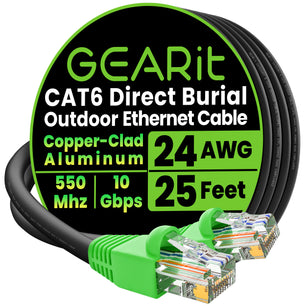
Ethernet cables play a crucial role in networking, connecting devices and enabling data transmission. When comparing Cat6 (Category 6) and Cat6a (Category 6a) cables, several key differences emerge:
1. Performance Specifications
Cat6
Cat6 cables support data speeds of up to 10/100/1000 Mbps (megabits per second) over a maximum distance of 328 feet (100 meters). They are terminated according to TIA 568A or B color code specifications and have jackets designed for various installation needs (such as riser-rated cables). Cat6 cables consist of eight copper conductors twisted into four pairs and feature an internal cross skeleton (spline) to keep the pairs separated.
Cat6a
The “a” in Cat6a stands for “augmented,” signifying improved specifications compared to Cat6. Cat6a cables operate at a minimum frequency of 500 MHz, doubling the effective distance for maintaining 10 Gbps speeds—up to 328 feet (100 meters). They also use thicker copper conductors and jackets, which can make installation more challenging
2. Twisting and Tolerances
Cat6a: Cat6a cables are made and terminated to tighter tolerances than Cat6 cables. This means that the copper conductors are twisted more tightly. Consequently, Cat6a requires higher-specification patch panels, wall jacks, and RJ45 connectors.
3. Speed and Ideal Conditions
Cat6a: With a speed rating of at least 500 MHz, Cat6a supports 10 Gbps data rates up to 328 feet (100 meters). In contrast, Cat6’s maximum speed is 250 MHz, allowing it to support 10 Gbps only up to 165 feet (55 meters) under ideal conditions (less in environments with heavy crosstalk).
4. Cost and Ease of Installation
Cat6a: Installing Cat6a cables for 10 Gbps speeds involves additional costs beyond just the cabling. Upgrading to Cat6a specification requires higher-performance switches and other networking hardware. It’s essential to consider whether your existing equipment supports or requires 10 Gbps speeds before opting for Cat6a. If not, Cat6a may not provide any benefits but will likely cost more.
In summary, Cat6a offers superior performance and longer reach for 10 Gbps speeds, but it comes with increased installation complexity and costs. Consider your equipment requirements and future upgrade plans when choosing between Cat6 and Cat6a cables.
























































